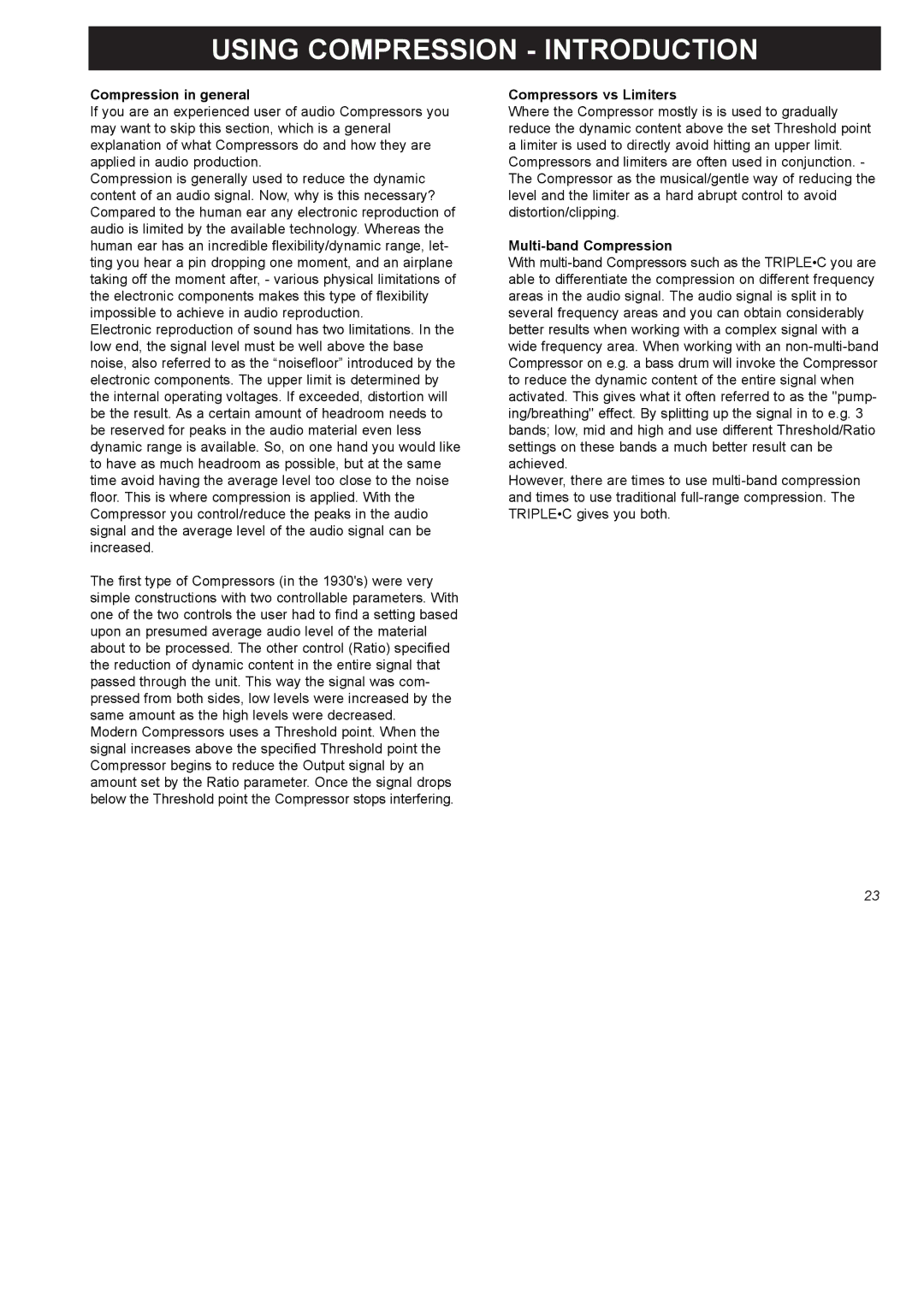USING COMPRESSION - INTRODUCTION
Compression in general
If you are an experienced user of audio Compressors you may want to skip this section, which is a general explanation of what Compressors do and how they are applied in audio production.
Compression is generally used to reduce the dynamic content of an audio signal. Now, why is this necessary? Compared to the human ear any electronic reproduction of audio is limited by the available technology. Whereas the human ear has an incredible flexibility/dynamic range, let- ting you hear a pin dropping one moment, and an airplane taking off the moment after, - various physical limitations of the electronic components makes this type of flexibility impossible to achieve in audio reproduction.
Electronic reproduction of sound has two limitations. In the low end, the signal level must be well above the base noise, also referred to as the “noisefloor” introduced by the electronic components. The upper limit is determined by the internal operating voltages. If exceeded, distortion will be the result. As a certain amount of headroom needs to be reserved for peaks in the audio material even less dynamic range is available. So, on one hand you would like to have as much headroom as possible, but at the same time avoid having the average level too close to the noise floor. This is where compression is applied. With the Compressor you control/reduce the peaks in the audio signal and the average level of the audio signal can be increased.
The first type of Compressors (in the 1930's) were very simple constructions with two controllable parameters. With one of the two controls the user had to find a setting based upon an presumed average audio level of the material about to be processed. The other control (Ratio) specified the reduction of dynamic content in the entire signal that passed through the unit. This way the signal was com- pressed from both sides, low levels were increased by the same amount as the high levels were decreased.
Modern Compressors uses a Threshold point. When the signal increases above the specified Threshold point the Compressor begins to reduce the Output signal by an amount set by the Ratio parameter. Once the signal drops below the Threshold point the Compressor stops interfering.
Compressors vs Limiters
Where the Compressor mostly is is used to gradually reduce the dynamic content above the set Threshold point a limiter is used to directly avoid hitting an upper limit. Compressors and limiters are often used in conjunction. - The Compressor as the musical/gentle way of reducing the level and the limiter as a hard abrupt control to avoid distortion/clipping.
Multi-band Compression
With
However, there are times to use
23
